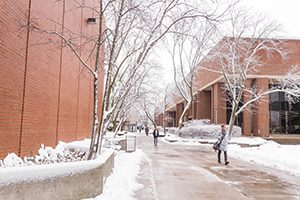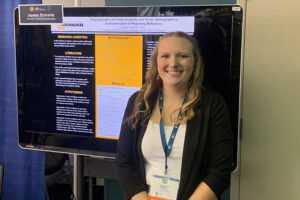If you’re surprised by the recent blast of wintry weather in Wisconsin, you’re not alone. Even weather-industry professionals like UW-Milwaukee’s Clark Evans, associate professor of atmospheric sciences, were surprised by the torrent of hail and snow that Mother Nature dumped on the state over the weekend.
“Green Bay had one of its biggest snowstorms on record for any month,” Evans said, “and has crushed old records for the most snow in the entire month of April.”
The hail was especially unusual.

“It’s not uncommon to see snow or hail in the Great Lakes in April, but it is uncommon to see both of them within one weather system,” Evans said. “Usually it’s too warm for snow when it’s favorable for hail or too cold for hail when it’s favorable for snow.”
And more wintry weather is expected.
“We will be slow to warm this week in advance of another messy storm on Wednesday that could bring rain, snow and/or freezing rain to Milwaukee,” Evans said from Florida, where he is attending the 33rdConference on Hurricanes and Tropical Meteorology. “A slow warmup is in store after that, tempered by the snow on the ground. That needs to be melted in order for things to really warm up.”
A major element of that can explain much of Wisconsin’s wilder springtime weather and slow warming patterns: Lake Michigan. “The lake has a huge impact on the weather in Milwaukee and much of Eastern Wisconsin,” he said.
Water warms slower than land or air. The larger the body of water, the longer the warmup. For UWM’s neighborhood lake, it may take until June for water temperatures to reach a comfortable temperature.
“So, whenever the winds are light or are off the lake, the lake-cooled air will move inland and cool us down,” Evans said. “It can impact up to 100 or so miles inland, but the largest effects are felt within 5-10 miles of shore, which includes UWM.”
Evans believes that most of the spring 2018 snowfall will be behind us after Wednesday, but he urges caution when it comes to hosting outdoor graduation parties and planting flowers, fruits and vegetables.
“I certainly wouldn’t advise any planting until around the typical Mother’s Day transition to true spring.”



